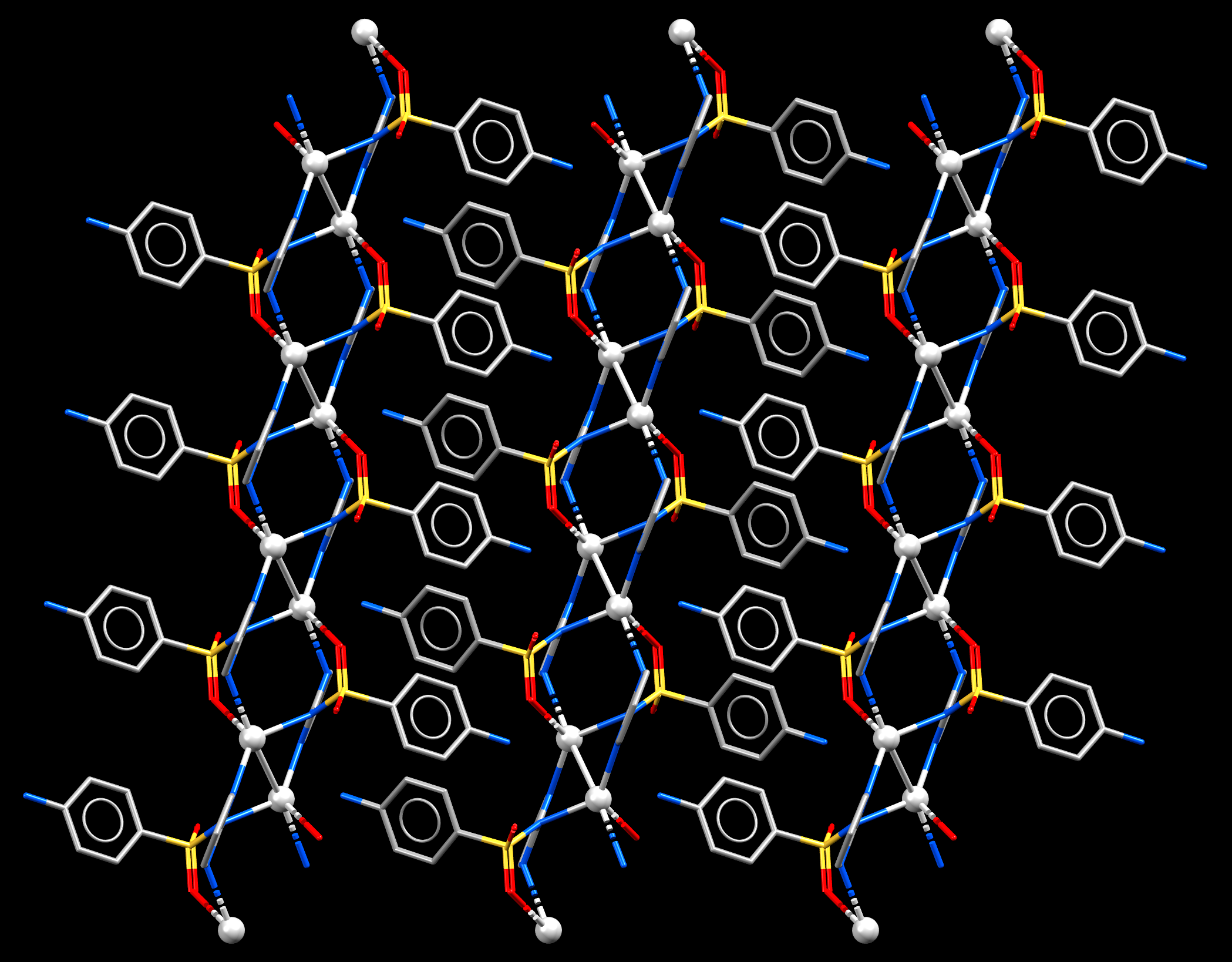Silver
Silver:

Image of the first daguerreotype, a photography precursor, taken in Spain in 1848
Facts about Silver:
- Silver: Lustrous white soft, malleable metal; stable to water and oxygen but attacked by sulfur compounds in air.
- Fun fact about Silver: Silver is the metal with the highest electrical and thermal conductivities. It is widely used as a decorative finish, in the production of amalgams and in the formation of mirrors. It has also been employed, as halides, for the photographic industry.
- Chemical symbol: Ag
- Atomic number: 47
A crystal structure containing Silver:

View of the double-stranded chain in the structure of the antibiotic silver sulfadiazine
Facts about this structure:
- Formula: (C20 H18 Ag2 N8 O4 S2)n
- Structure name: catena(bis(μ2-Sulfanilaminopyrimidine-N,N’,N”,O)-di-silver(i))
- Fun fact about the structure: Silver sulfadiazine was employed as a topical treatment against infections in burnt tissues.
- CSD refcode: SULPMS (What’s this?)
- Associated publication: N.C.Baenziger, A.W.Struss, Inorganic Chemistry, 1976, 15, 1807, DOI: 10.1021/ic50162a014
More about Silver:
Silver was probably the third metal to be discovered, after gold and copper. It is the most reactive of the noble metals. Silver is widely distributed in nature in the native form, as an alloy with other metals and being part of minerals such as argentite. Thanks to its antimicrobial properties, silver has been used in medicine as bactericidal agent. The sensitivity to light of silver halides is the origin of photography since the exposure of photographic film containing silver bromide to light produces the reduction of this compound to metallic silver in such a way that the most strongly illuminated parts of the film become the darkest.
Learn More About the International Year of the Periodic Table (IYPT) in Crystals Project:
This project (#IYPTCrystals) is part of the International Year of the Periodic Table celebration (#IYPT2019), read more about the project here.
You can follow us on social media; search for #IYPTCrystals or follow The CCDC on X @ccdc_cambridge on Facebook ccdc.cambridge, on Instagram ccdc_cambridge or on YouTube CCDCCambridge.
Understand some of the terms and concepts used with our Frequently Asked Questions page here.
A 3D visualization showing Silver in real crystal structures: